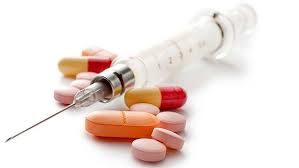Counterfeit drugs set alarm bells ringing: comparative analysis of drug policies
Keywords:
Counterfeits medicines, Drug importers, Quality of medicines, Regulatory authoritiesAbstract
The strategy of price liberalisation and privatisation had been implemented in Sudan over the last decade, and has had a positive result on government deficit. The investment law approved recently has good statements and rules on the above strategy in particular to pharmacy regulations. Under the pressure of the new privatisation policy, the government introduced radical changes in the pharmacy regulations. To improve the effectiveness of the public pharmacy, resources should be switched towards areas of need, reducing inequalities and promoting better health conditions. Medicines are financed either through cost sharing or full private. The role of the private services is significant. A review of reform of financing medicines in Sudan is given in this communication. Also, it highlights the current drug supply system in the public sector, which is currently responsibility of the Central Medical Supplies Public Corporation (CMS). In Sudan, the researchers did not identify any rigorous evaluations or quantitative studies about the impact of drug regulations on the quality of medicines and how to protect public health against counterfeit or low quality medicines, although it is practically possible. However, the regulations must be continually evaluated to ensure the public health is protected against by marketing high quality medicines rather than commercial interests, and the drug companies are held accountable for their conduct.
References
Abdeen M. Omer, 2011. The impact of the pharmaceutical regulations on the quality of medicines on the Sudanese market: importers’ perspective, Prim. J. Bus. Administ. Manag. (BAM), 1(9), 295-302, Nigeria, October.
Abdeen M. Omer, 2013. Chapter 5: Regulatory privatisation, social welfare services and its alternatives, In: Advances in medicines and biology, Vol.72, Editor: Leon V. Berhardt, 2013 NOVA Science Publishers, Inc., 69-86, New York, USA.
Alubo, S.O., 1994. Death for sale: A study of drug poisoning and deaths in Nigeria. Soc. Sci. Med., 38(1), 97 – 103.
Andalo, D., 2004. Counterfeit drugs set alarm bells ringing. Pharmaceut. J., 273- 341.
Bryman, A., 2004. Social Research Method. (2nd Edition). Oxford University Press.
Elfadil, A.A., 2005. Quality assurance and quality control in the CMSPO.
Erhun, W.O., Babalola, O.O., Erhun, M.O., 2001. Drug regulation and control in Nigeria: The counterfeit drugs. J. Health. Popul. Dev. Count., 4(2), 23– 34.
Gamal, K.M., Omer, A.M., 2006. A prescription for improvement: A short survey to identify reasons behind public sector pharmacists’ migration. World. Health. Popul., 1-24.
Helling-Borda, M., 1995. The role and experience of the world health organisation in assisting countries to develop and implement national drug policies. Australian Prescriber 20(1), 34–38.
Jallow, M., 1991. Evaluation of national drug policy in the Gambia, with special emphasis on the essential drug programme. University of Oslo: Norway.
Lexchin, J., 1990. Drug makers and drug regulators: Too close for comfort. A study of the Canadian situation. Soc. Sci. Med., 31(11), 1257 – 1263.
Lofgren, H., Boer, R., 2004. Pharmaceuticals in Australia: developments in regulation and governance. Soc. Sci. Med., 58, 2397 – 2407.
Ministry of Health (MOH), 2001. Act 2001: Pharmacy, poisons, cosmetic and medical devices. Ministry of Health (MOH): Sudan.
Ministry of Health (MOH), 2003. 25 years pharmacy strategy (2002-2027). Khartoum: Sudan. Unpublished Report.
National Drug Policy (NDP), 1997. Ministry of Health (MOH): Sudan.
Osibo, O.O., 1998. Faking and counterfeiting of drugs. West. Afr. J. Pharm., 12(1), 53 – 57.
Ramprabhu1, R., Jairam, A., Karthik1, K., Ravikanth, Shivi Maini, Adarsh, 2014. Evaluation of regular teat sanitisation control measures for prevention of sub clinical mastitis in cattle, Am. J. Phytomed. Clin. Therapeut., AJPCT (2)9, 1212-1216.
Ratanwijitrasin, S., Soumerai, S.B., Weerasuriya, K., 2001. Do national medicinal drug policies and essential drug programmes improve drug use? A review of experiences in developing countries. Soc. Sci. Med., 53, 831–844.
Ravi Shankar, K., Sita Ratna Kumari, N., Kiranmayi, G.V.N., 2014. In vitro study of antioxidant and antimalarial activities of new chromeno-pyrano-chromene derivative, Am. J. Phytomed. Clin. Therapeut., AJPCT (2)9, 1169-1176.
Rudolf, P.M., Bernstein, I.B.G., 2004. Counterfeit drugs. New Eng. J. Med., 350(14), 1384 - 1386.
Shakoor, O., Taylor, R.B., Behrens, R.H., 1997. Assessment of the substandard drugs in developing countries. Trop. Med. Int. Health. 2(9), 839 – 845.
Sibanda, F.K., 2004. Regulatory excess: The role of regulatory impact assessment and the Competition Commission. In: Proceedings of the Pro-Poor Regulation and Competition Conference hosted by the Centre of Regulation and Competition (CRC), University of Manchester, UK, and the School of Public Management and Planning, University of Stellenbosch, Cape Town, 7-9 September.
Velpandian, V., Elangovan, S., Naansi Agnes, L., Mohamed Musthafa, M., 2014. Clinical evaluation of justicia tranquebariensis L. In the Management of Bronchial Asthma, Am. J. Phytomed. Clin. Therapeut., AJPCT (2)9, 1103-1111.
WHO, 1991. Counterfeit drugs: guidelines for the development of measures to combat counterfeit drug. Geneva: World. Health. Organ., WHO/EDM/QSM/1990.1.
WHO, 2000. International drug policies. Geneva: Switzerland.
World Health Organisation / Drug Action Programme (WHO/DAP), 1996. Comparative analysis of international drug policies. Report from the second workshop Geneva, June.

Published
How to Cite
Issue
Section
License
Copyright (c) 2020 Abdeen Mustafa Omer

This work is licensed under a Creative Commons Attribution-NonCommercial-NoDerivatives 4.0 International License.



